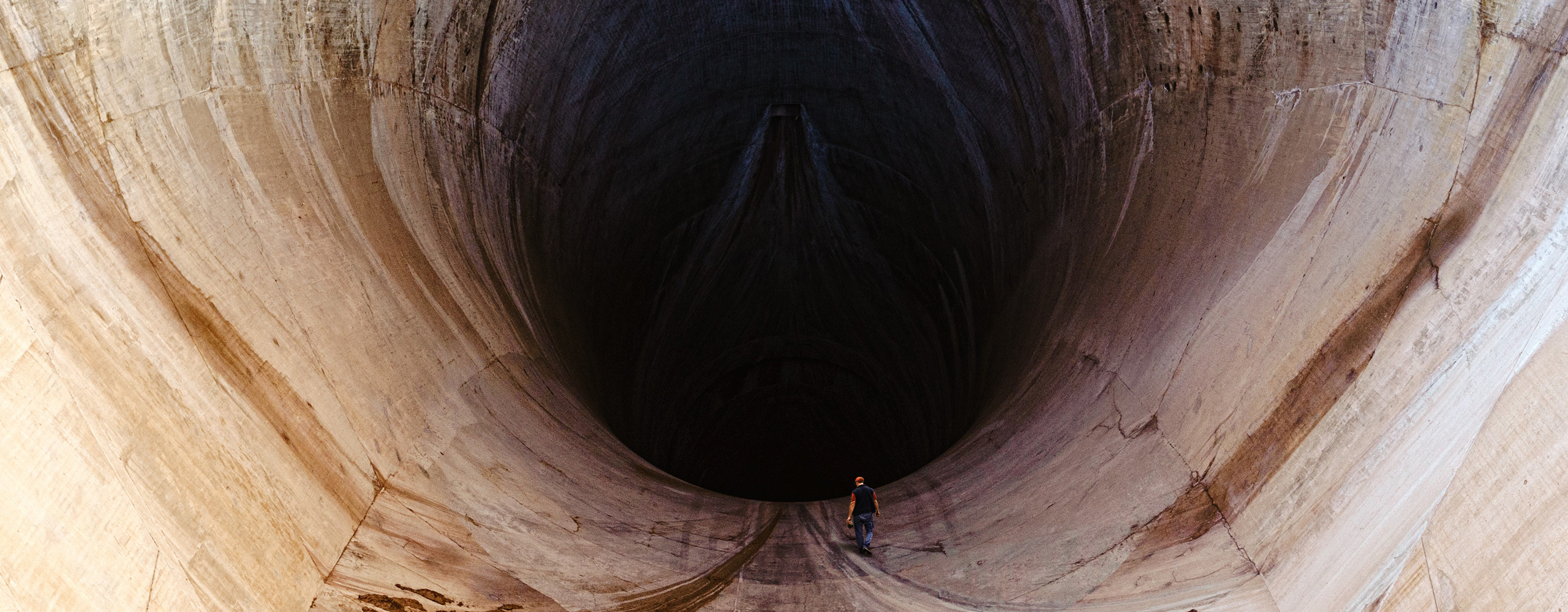Simulating Slope Displacement using IMASS Modeling
Project Description
The stability of the Western Copper Pit (WCP) at Morenci Mine is highly controlled by discontinuities. In early 2021, the eastern wall of the WCP experienced significant displacements after the active mining reached weak diabase sills at the toe of the open pit. The diabase sills are shallow dipping and provide a potential basal sliding surface and, in combination with backplane faults, form a structural failure mechanism. The slope movement history was recorded using radar monitoring and inclinometers.
Itasca used FLAC3D to back-analyze the open pit slope displacements measured by radar and inclinometers. An important part of any slope stability analysis involves accounting for rock mass strength loss due to deformations. Itasca utilized the IMASS (Itasca Model for Advanced Strain-Softening) constitutive model to predict emergent damage and strength loss rather than predefining it (e.g., using the Hoek-Brown Damage Factor, D).
Itasca's Role
Itasca developed a 3D mine-scale model using IMASS around the open pit. Using Griddle, a total of 39 faults and 41 diabase surfaces were explicitly included in the model as interfaces (i.e., surfaces that can slip and separate). Thirteen mining stages were considered in the model to better capture the stress-strain path from the pre-mining stage to the period of calibration (H1 2021). The spatial distribution of water pressures within the slope (i.e., one-way hydromechanical coupling) was also considered. In slope stability analyses, IMASS provides important progress related to the definition of damage because it allows the emergent strength degradation with accumulated plastic shear strain to be simulated. Further, IMASS considers the two-stage softening behavior for a rock mass and distinguishes between damage (caused by fracturing and the associated loss of cohesion and tensile strength) and the subsequent bulking at larger strain levels.
Project Results
A numerical assessment was carried out to back-analyze the displacements observed in the east wall of the WCP during the first half of 2021. Reasonable agreements were achieved for both superficial (radar) and sub-surface (inclinometer) displacements. The former results are shown in comparison to observations in Figure 1.
The resultant damage was focused near the toe of the wall, especially around the diabase sills (where most of the stress relaxation is taking place and where the weaker rock mass is present), as shown in Figure 2. The magnitude of this damage was not uniform behind the slope face and was fairly shallow, agreeing with the observation that most failures in large open pit slopes are shallow.


References
Cancino C., L. Lorig, P. Siburian, P. Coutinho, and L.C., Tejada (2022). “Application of a strain-softening model to simulate slope displacements at Freeport-McMoRan Morenci Mine,” Proceedings of the International Slope Stability 2022 Symposium, Tucson, Arizona, October 17-21, 9 pages.

